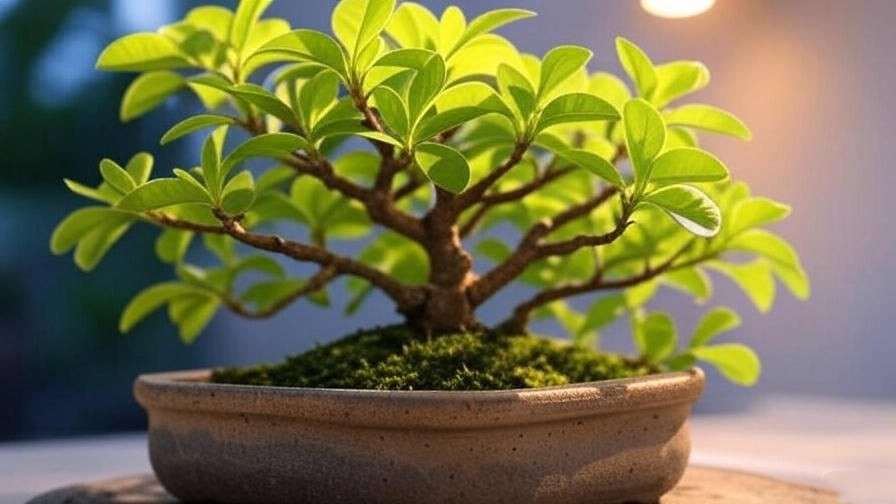Imagine a bonsai that dances with the rhythm of day and night, its delicate, fern-like leaves folding up as dusk falls and unfurling with the morning sun. The Brazilian Rain Tree (Pithecellobium tortum) is that captivating plant, a favorite among bonsai enthusiasts for its graceful beauty and forgiving nature. Whether you’re a beginner dreaming of your first bonsai or a seasoned grower aiming for a show-stopping centerpiece, this guide unlocks the secrets to nurturing a thriving Brazilian Rain Tree. From light and watering to pruning and pest control, we’ll cover everything you need to cultivate a healthy, stunning bonsai that turns heads. Ready to embark on this rewarding journey? Let’s dive in! 🌿
1. Understanding the Brazilian Rain Tree 🌱
1.1 What Is a Brazilian Rain Tree?
The Brazilian Rain Tree, scientifically known as Pithecellobium tortum or Chloroleucon tortum, is a tropical species native to South America, particularly Brazil and Paraguay. In its natural habitat, it thrives in warm, humid environments, often reaching heights of 10–20 feet. As a bonsai, its compact size, intricate branch structure, and delicate, compound leaves make it a standout choice. One of its most enchanting traits is its nyctinastic movement—leaves that close at night and open during the day, mimicking the rhythm of nature. This adaptability and visual appeal make it a top pick for bonsai growers worldwide.
1.2 Why Choose a Brazilian Rain Tree for Bonsai?
Why is the Brazilian Rain Tree so beloved? For starters, it’s incredibly forgiving, making it ideal for beginners learning the art of bonsai. Its fast growth rate allows for quicker shaping compared to slower-growing species like pines or junipers. For advanced growers, its fine foliage and flexible branches offer endless creative possibilities for crafting intricate bonsai designs. Plus, it adapts well to both indoor and outdoor environments, provided its care needs are met.
Bonsai expert John Nakamura, with over 30 years of experience, says, “The Brazilian Rain Tree’s responsiveness to pruning and wiring, combined with its lush, tropical aesthetic, makes it a joy to work with for any skill level.” Whether you’re aiming for a classic upright style or a cascading masterpiece, this tree delivers.
2. Essential Care Requirements for a Healthy Brazilian Rain Tree 🌞
2.1 Light and Temperature Needs ☀️
Light is the lifeblood of a thriving Brazilian Rain Tree. Indoors, place it near a south-facing window with bright, indirect light for at least 6–8 hours daily. Outdoors, it prefers partial shade to protect its delicate leaves from scorching. If you’re using grow lights, opt for full-spectrum LED lights (5000–6500K) to mimic natural sunlight.
Temperature-wise, the Brazilian Rain Tree thrives between 60–85°F (15–29°C). It’s sensitive to frost, so bring outdoor trees indoors or provide protection if temperatures drop below 50°F (10°C). A common mistake is placing the tree in low-light conditions, which leads to leggy growth and sparse foliage. Ensure consistent light exposure to keep your bonsai vibrant.
2.2 Watering and Humidity 💧
Watering a Brazilian Rain Tree requires balance—keep the soil consistently moist but never waterlogged. Check the top inch of soil; if it feels dry, it’s time to water. In warm months, you may need to water daily, while in cooler seasons, every 2–3 days may suffice, depending on your climate. Use a watering can with a fine nozzle to evenly moisten the soil without disturbing the roots.
Humidity is critical, as this tropical species prefers 50–70% humidity. Indoors, boost humidity with a pebble tray filled with water or a room humidifier. Misting the foliage 1–2 times daily can also help, especially in dry climates. Expert tip: To avoid overwatering, insert a chopstick into the soil; if it comes out wet, hold off on watering for a day or two.
2.3 Soil and Fertilization 🌿
A well-draining soil mix is non-negotiable for a healthy Brazilian Rain Tree. A blend of 50% akadama, 25% pumice, and 25% lava rock works well, providing aeration and drainage while retaining enough moisture. Avoid heavy, water-retaining soils like garden dirt, which can cause root rot.
Fertilize every two weeks during the growing season (spring to early fall) with a balanced liquid fertilizer (10-10-10 or 20-20-20). Dilute to half-strength to prevent root burn. In winter, reduce feeding to once a month or pause entirely if growth slows. Pro tip: Organic fertilizers like fish emulsion can enhance soil health but use sparingly to avoid odor indoors.
3. Pruning and Shaping Your Brazilian Rain Tree ✂️
3.1 Pruning Techniques for Healthy Growth
Pruning is essential to maintain the health and aesthetics of your Brazilian Rain Tree. Maintenance pruning involves removing dead, yellowing, or overcrowded leaves to encourage new growth and improve air circulation. Use sharp, sterilized bonsai shears to make clean cuts at a 45-degree angle just above a leaf node.
Structural pruning shapes the tree’s overall form. Focus on removing branches that disrupt the desired silhouette, such as those crossing or growing inward. Prune in early spring when the tree is actively growing for faster recovery. Avoid removing more than 30% of the foliage at once to prevent stress.
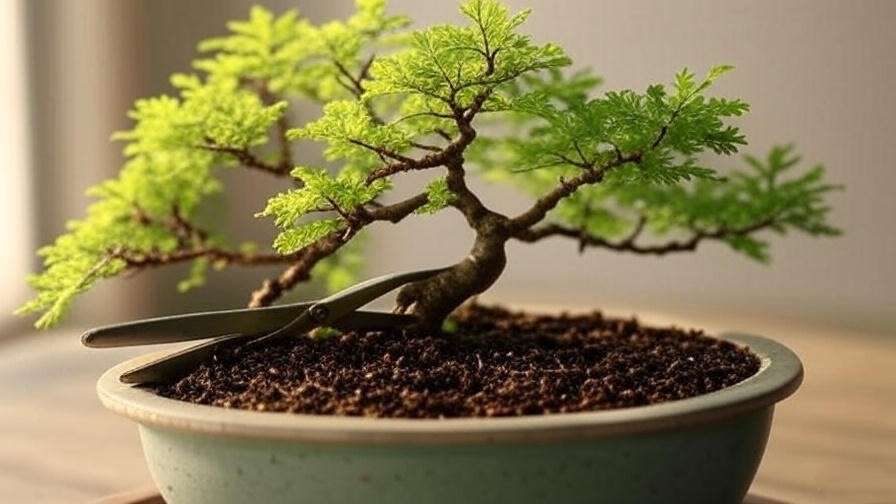
3.2 Wiring and Shaping for Bonsai Artistry 🎨
Wiring allows you to sculpt your Brazilian Rain Tree into stunning bonsai shapes. Use aluminum bonsai wire (1–3mm, depending on branch thickness) and wrap it at a 45-degree angle around branches. Gently bend to create curves or angles, but avoid excessive force to prevent bark damage. Spring or early summer is the best time for wiring, as branches are more pliable.
Check wires every 4–6 weeks to ensure they aren’t cutting into the bark as the tree grows. Remove or adjust as needed. Caution: The Brazilian Rain Tree has delicate bark, so wrap wires carefully and monitor closely.
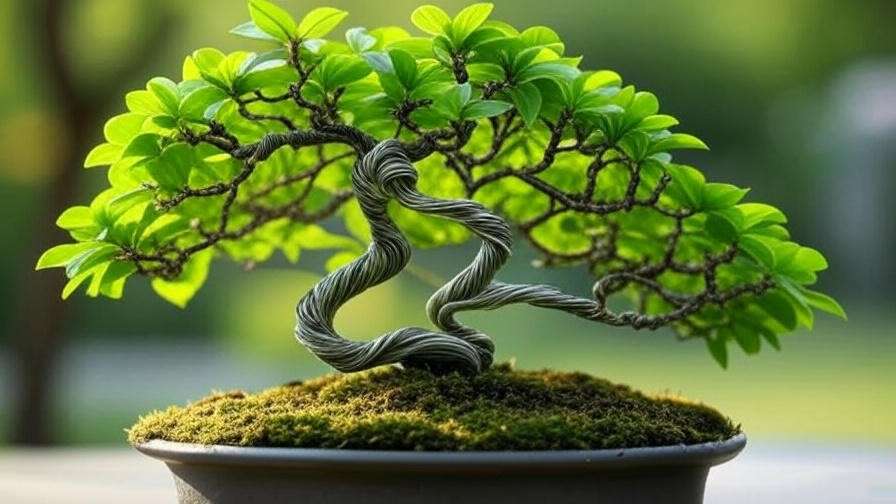
3.3 Defoliation for Smaller Leaves
To achieve the miniature leaf size ideal for bonsai, consider partial defoliation. This involves removing larger leaves to encourage smaller, more proportionate ones. Perform defoliation in late spring on healthy trees only, leaving at least one pair of leaves per branch to support photosynthesis. Avoid defoliating more than 50% of the foliage at once, and never defoliate a stressed or weakened tree.
4. Repotting and Root Care 🌱
4.1 When and How to Repot
Repotting keeps your Brazilian Rain Tree healthy by refreshing the soil and managing root growth. Young trees (under 5 years) need repotting every 1–2 years, while mature trees can go 3–5 years. The best time is early spring, just before the growing season.
Steps to repot:
- Gently remove the tree from its pot and shake off excess soil.
- Trim away 20–30% of the root mass, focusing on thick, circling roots.
- Place the tree in a slightly larger bonsai pot with fresh, well-draining soil.
- Water thoroughly and keep the tree in partial shade for 2 weeks to recover.
Expert insight: “Root pruning is like a haircut for your bonsai’s roots—it promotes vigor and prevents overcrowding,” says bonsai master Lisa Chen.
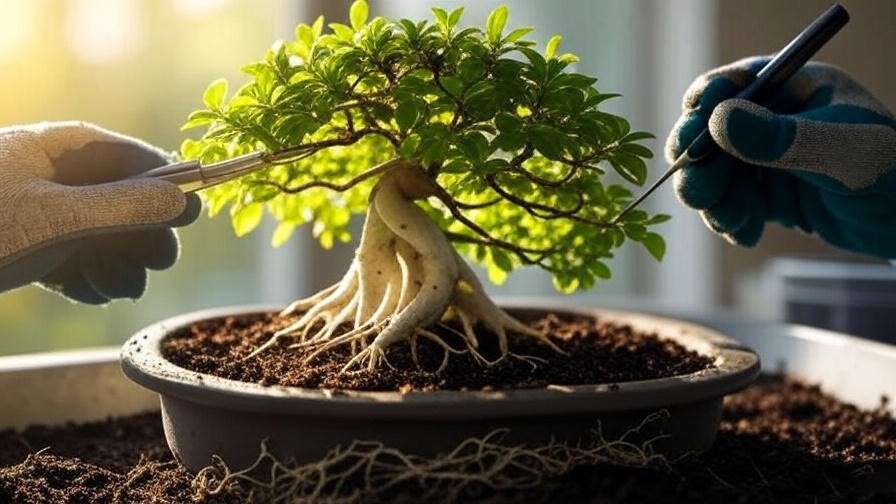
4.2 Signs Your Brazilian Rain Tree Needs Repotting
Look for these indicators:
- Roots circling the pot: Visible roots at the soil surface or through drainage holes.
- Slow growth: Stunted foliage or reduced vigor despite proper care.
- Poor drainage: Water pools on the soil surface or takes too long to absorb.
During repotting, inspect roots for rot (brown, mushy roots) and trim affected areas with sterilized tools. Healthy roots should be white and firm.
5. Common Problems and Solutions 🐛
5.1 Pests and Diseases
Like any plant, the Brazilian Rain Tree can fall prey to pests and diseases, but with vigilance, these issues are manageable. Common pests include spider mites, aphids, and scale insects. Spider mites thrive in dry conditions, leaving fine webbing and stippled leaves. Aphids cluster on new growth, sucking sap and causing leaves to curl. Scale insects appear as small, waxy bumps on stems and leaves.
Solutions:
- Organic treatments: Spray neem oil or insecticidal soap weekly until pests are gone. Mix 1 tsp neem oil with 1 quart of water and a drop of dish soap for an effective spray.
- Manual removal: Use a soft brush or cotton swab dipped in alcohol to remove scale insects.
- Prevention: Maintain 50–70% humidity and ensure good air circulation to deter pests.
Fungal diseases like root rot can occur from overwatering or poor drainage. Symptoms include wilting despite moist soil or black, mushy roots. To prevent this, use well-draining soil and avoid letting the pot sit in water. If root rot is detected, trim affected roots and repot in fresh soil.
Expert tip: Regularly inspect the undersides of leaves and branch junctions, as pests often hide there. Early detection is key to keeping your Brazilian Rain Tree healthy.
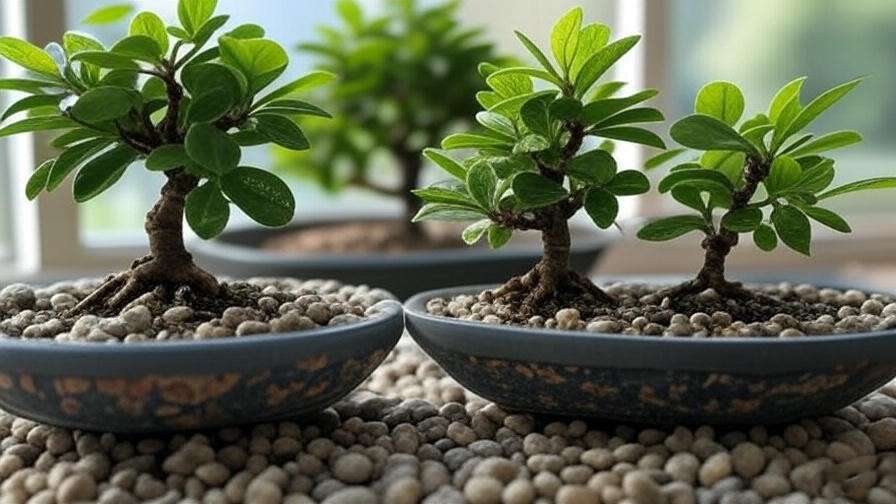
5.2 Yellowing Leaves and Other Issues
Yellowing leaves, leaf drop, or stunted growth are common concerns for Brazilian Rain Tree owners. Below is a troubleshooting guide to diagnose and fix these issues:
| Symptom | Possible Cause | Solution |
| Yellowing leaves | Overwatering or nutrient deficiency | Check soil moisture; reduce watering if soggy. Apply balanced fertilizer. |
| Leaf drop | Low light or sudden temperature changes | Move to brighter location; maintain stable temperatures (60–85°F). |
| Stunted growth | Root-bound or insufficient light | Repot if roots are circling; ensure 6–8 hours of bright, indirect light daily. |
| Leaves closing during day | Stress from overwatering or low humidity | Adjust watering; increase humidity with a tray or humidifier. |
Example: If your Brazilian Rain Tree’s leaves are yellowing, first check the soil. If it’s waterlogged, let it dry out slightly and adjust your watering schedule. If the soil is fine, a lack of nutrients might be the culprit—apply a diluted 10-10-10 fertilizer to boost growth.
6. Advanced Tips for a Show-Stopping Brazilian Rain Tree 🌟
6.1 Creating a Stunning Bonsai Display
A well-displayed Brazilian Rain Tree elevates its beauty from plant to art. Choose a bonsai pot that complements the tree’s style—shallow, oval pots for formal upright designs or deeper, round pots for cascading forms. Neutral colors like matte black or earthy brown highlight the tree’s vibrant foliage.
Enhance the display with:
- Moss: Add a layer of live moss to the soil surface for a natural, forest-like effect.
- Accent rocks: Place small, smooth stones to mimic a landscape.
- Display stand: Elevate the bonsai on a wooden or stone stand for prominence.
Place your bonsai in a well-lit area of your home, such as near a window or on a dedicated shelf, or outdoors in a shaded garden spot. Avoid cluttered backgrounds to let the tree shine.
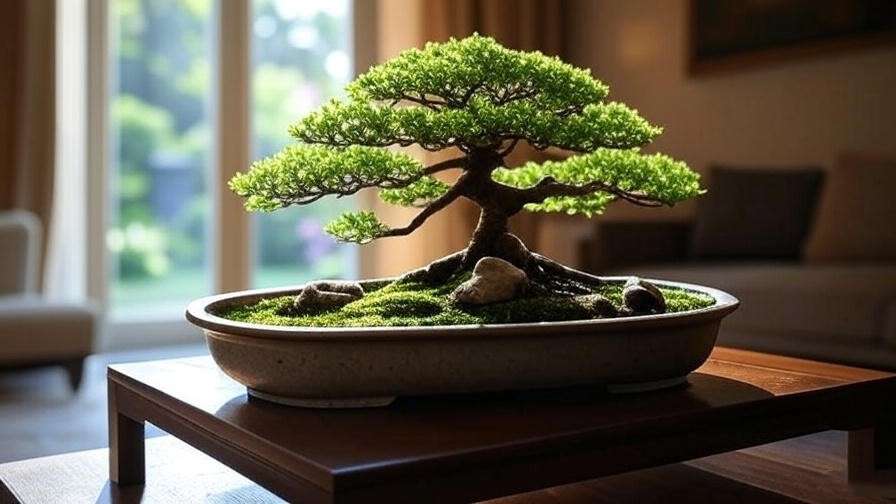
6.2 Seasonal Care Adjustments
The Brazilian Rain Tree requires tailored care through the seasons to stay healthy:
- Spring: Increase watering and fertilization as growth resumes. Prune and wire to shape new growth.
- Summer: Monitor for pests and ensure high humidity. Provide partial shade outdoors to prevent leaf burn.
- Fall: Reduce watering and fertilization as growth slows. Prepare for indoor transition if temperatures drop.
- Winter: Keep indoors in cooler climates, with minimal watering and no fertilization unless under grow lights.
Seasonal Care Calendar:
| Season | Light | Watering | Fertilization |
| Spring | Bright, indirect (6–8 hrs) | Daily or every 2 days | Every 2 weeks (10-10-10) |
| Summer | Partial shade outdoors | Daily, check humidity | Every 2 weeks |
| Fall | Bright, indirect | Every 2–3 days | Monthly |
| Winter | Bright, indirect/grow lights | Every 3–5 days | None or monthly |
6.3 Expert Techniques for Mastery
For those aiming to take their Brazilian Rain Tree to the next level, try these advanced techniques:
- Grafting: Introduce new branches to enhance the tree’s structure. Use thread grafting for seamless integration.
- Air Layering: Create a new tree from a branch to propagate or refine the bonsai’s form.
- Forest-Style Bonsai: Plant multiple Brazilian Rain Trees in a single pot to mimic a miniature grove, ensuring varied heights for depth.
Bonsai master Elena Martinez advises, “Patience is key with advanced techniques. Practice on less valuable branches first to perfect your skills before tackling your prized Brazilian Rain Tree.”
7. FAQs About Brazilian Rain Tree Care ❓
Q1: Can a Brazilian Rain Tree survive indoors year-round?
Yes, with proper care. Ensure 6–8 hours of bright, indirect light, 50–70% humidity, and consistent temperatures (60–85°F). Supplement with grow lights in low-light conditions.
Q2: How often should I water my Brazilian Rain Tree in winter?
Water every 3–5 days, depending on indoor conditions. Check soil moisture to avoid overwatering, as growth slows in winter.
Q3: Why are my tree’s leaves closing during the day?
Daytime leaf closure often signals stress from overwatering, low humidity, or insufficient light. Adjust care accordingly and monitor for pests.
Q4: Is the Brazilian Rain Tree toxic to pets?
The Brazilian Rain Tree is not known to be highly toxic, but ingestion may cause mild stomach upset in pets. Keep it out of reach of curious cats or dogs.
Q5: How do I know if my bonsai is healthy?
A healthy Brazilian Rain Tree has vibrant green leaves, steady growth, and firm, white roots. Regular leaf movement (closing at night, opening by day) is also a good sign.
8. Conclusion
Growing a thriving Brazilian Rain Tree is a rewarding journey that blends art, science, and patience. By providing the right light, water, and humidity, pruning thoughtfully, and repotting when needed, you’ll cultivate a bonsai that’s both healthy and breathtaking. Whether you’re troubleshooting yellow leaves or mastering advanced wiring techniques, this guide equips you with expert-backed strategies to succeed. Start applying these tips today, and watch your Brazilian Rain Tree transform into a stunning bonsai masterpiece! 🌟 Share your progress or questions in the comments below—we’d love to hear about your bonsai journey!

